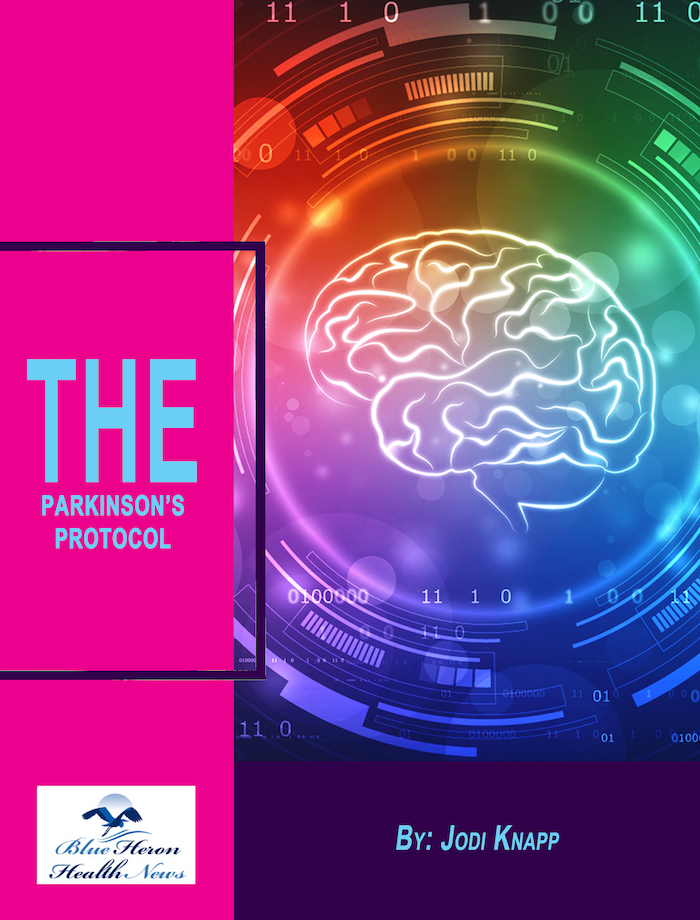
The Parkinson’s Protocol™ By Jodi KnappThus, the eBook, The Parkinson’s Protocol, educates you regarding the natural and simple ways to minimize the symptoms and delay the development of Parkinson’s effectively and quickly. It will also help your body to repair itself without following a specific diet plan, using costly ingredients or specific equipment. Its 60 days guarantee to return your money allows you to try for once without any risk.
What is the role of nutrition in managing Parkinson’s symptoms?
Nutrition plays a supportive but effective role in managing Parkinson’s disease (PD) symptoms. It does not cure PD or slow its course, but well-planned eating can enhance symptom management, enhance medication effectiveness, and reduce complications such as constipation, weight loss, and bone loss.
Here’s the way nutrition can help:
???? 1. Optimal Medication Effectiveness (Specifically Levodopa)
Protein timing matters. Protein will interfere with the absorption of levodopa, the main medication for PD.
Most people find it useful to eat most of the protein in the evening to avoid competing with medication earlier in the day.
Levodopa taken on an empty stomach (30–60 minutes before meals) can promote absorption.
???? 2. Avoiding Constipation
Constipation is a very common and early PD symptom.
Fiber-rich foods (whole grains, fruits, vegetables, legumes) promote regular bowel movements.
Hydration (at least 6–8 cups of water per day) is essential.
Daily intake of prunes, flaxseed, or psyllium husk can also be beneficial.
???? 3. Maintaining Muscle Mass and Weight
Parkinson’s can lead to:
Involuntary weight loss secondary to difficulty swallowing, reduced appetite, or increased energy expenditure due to tremors.
Muscle wasting (sarcopenia), especially in advanced disease.
Nutrition interventions:
High-calorie, high-protein snacks (e.g., nut butters, smoothies, Greek yogurt).
Small frequent meals if appetite is poor.
Speech therapy support if swallowing difficulties are involved.
???? 4. Bone Health
People with PD are at increased risk of osteoporosis and fractures, due to falls and immobility.
Ensure sufficient calcium (1,000–1,200 mg/day) and vitamin D (600–800 IU/day, more if deficient).
Use dairy or fortified plant foods, leafy greens, almonds, and fatty fish.
????♀️ 5. Reducing Inflammation and Oxidative Stress
Oxidative stress has also been implicated in PD progression.
A high-antioxidant diet (vitamins C, E, flavonoids, carotenoids) might be helpful:
Berries, green tea, turmeric, leafy veggies, nuts, and seeds are good sources.
Mediterranean-style diets (olive oil, fish, veg, whole grain) have correlated with better cognition and motor functioning in some reports.
???? 6. Brain Health and Cognition
Omega-3 fatty acids (from fish like salmon, mackerel, or flaxseeds) may help preserve cognitive function.
B vitamins (especially B6, B12, and folate) help with homocysteine regulation and nervous system function.
⚠️ 7. Side Effect Management of Medication
Nausea is a frequent side effect of levodopa, which can be minimized by:
Taking it with a little carbohydrate (like crackers or applesauce).
Avoiding high-fat meals, which delay stomach emptying.
Recurrent use of levodopa can lead to B6, B12, or folate imbalance, and levels should be checked.
✔️ Nutrition Goals Summary in Parkinson’s:
Goal Strategy
Help absorption of medication Timing protein meals and taking levodopa on an empty stomach
Prevent constipation Eat fiber and drink well
Preserve weight and muscle High-calorie snacks, more frequent meals, monitor swallowing
Preserve bones Calcium and vitamin D
Reduce oxidative stress Eat anti-inflammatory and antioxidant foods
Enhance cognitive health Add omega-3s and B vitamins
Would you like a sample meal plan or grocery list tailored to Parkinson’s support?
Yes, certain foods have the potential to worsen symptoms or interact with medications in patients with Parkinson’s disease (PD). While diet is not a treatment, avoiding or minimizing certain foods can maximize symptom control, enhance medication effectiveness, and enhance overall health.
???? Foods to Reduce or Avoid in Parkinson’s Disease:
1. High-Protein Foods (in excess)
Why: Too much protein can interfere with the absorption of levodopa, a main PD medication.
Examples: Red meat, poultry, eggs, and dairy.
Tip: Try a protein redistribution diet—consume most protein in the evening when motor symptoms are less disabling.
2. Saturated and Trans Fats
Why: Can cause oxidative stress and inflammation and speed up PD progression.
Examples: Fried foods, processed snacks, margarine, fatty cuts of meat, full-fat dairy.
3. Sugary Foods
Why: Refining sugar can cause energy spikes and crashes, inflammation, and contribute to constipation.
Examples: Candy, soda, pastries, sugary cereals.
4. Alcohol
Why: Can enhance imbalance, sleep problem, and interact with medications. May also amplify depression or mood swings experienced by PD.
Tip: Use it at all only with restraint and on a physician’s advice.
5. Highly Processed Foods
Why: Typically packed with preservatives, sodium, and fiber—all three of which promote constipation and inflammation.
Examples: Frozen meals, frozen dinners, fries, deli fare.
6. Caffeine (excessive)
Why: While moderate levels of caffeine may be helpful, too much can worsen sleep disorders and anxiety.
Tip: Be aware of individual tolerance.
7. Low-Fiber Foods
Why: Constipation is a common PD symptom; low-fiber foods make it worse.
Examples: White bread, white rice, low-fiber cereals.
8. Fermented or Aged Foods (for some)
Why: May interact with MAO-B inhibitors, a class of PD medication, leading to potentially life-threatening high blood pressure.
Examples: Cured meats, red wine, aged cheese, sauerkraut, soy sauce.
Tip: Talk to your doctor if you are on medications like selegiline or rasagiline.
✅ Healthier Options for PD:
Fiber-rich foods (legumes, vegetables, whole grains)
Antioxidant fruits and vegetables (berries, leafy greens)
Omega-3 fatty acids (walnuts, flaxseeds, salmon)
Hydration (ample water for constipation and drug absorption)
Would you like an example daily meal plan for an individual with Parkinson’s disease?
The Parkinson’s Protocol™ By Jodi KnappThus, the eBook, The Parkinson’s Protocol, educates you regarding the natural and simple ways to minimize the symptoms and delay the development of Parkinson’s effectively and quickly. It will also help your body to repair itself without following a specific diet plan, using costly ingredients or specific equipment. Its 60 days guarantee to return your money allows you to try for once without any risk